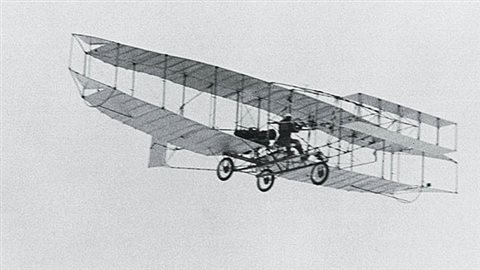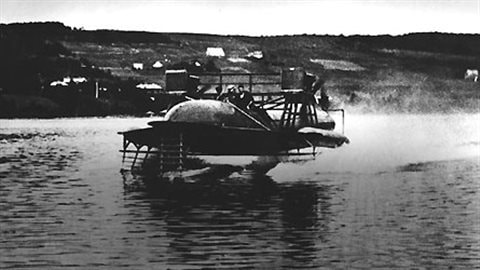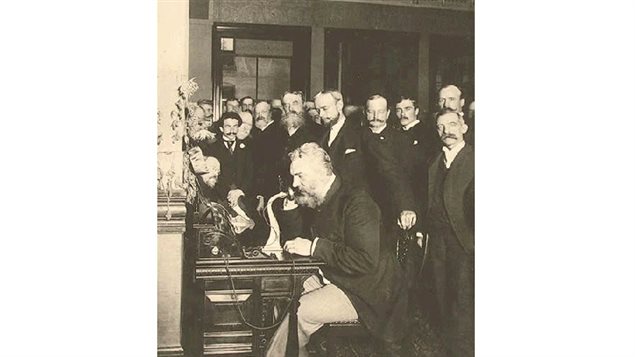The beginnings of the telephone
On March 10, 1876, and just days after being granted an American patent for “improvement in Telegraphy”, Canadian Alexander Bell was able to transmit his voice across wires to an assistant in another room.
As a young man, Alexander Bell, (later calling himself Alexander Graham Bell), immigrated to Canada, settling near Brantford Ontario. Long interested in sound, he and his father worked as speech therapists for the deaf.
He later accepted a position as teacher/therapist in Boston where he taught “visible speech” to the deaf by illustrating, through a series of drawings, how sounds are made, essentially teaching his students to speak by seeing sound
As a side activity, he became fascinated with the idea of transmitting speech electrically, both in Boston and during summers when he returned to the family home in Ontario.
Initially interested in how harmonics could be used to send more than one message at a time over telegraph wires via differing frequencies, his research soon led him down a path towards communicating speech electrically, since vocal sounds were also “vibrations”.
In 1874, while watching the current flow in the Grand River near the home in Brantford, he pondered the concept of sound waves moving through air and how it would be possible to transmit any sound, such as various vocal sounds, through controlling the variations and intensity of the electrical current.
Within a few years and after a number of experiments he successfully transmitted his voice, writing in a notebook, “I then shouted into M [microphone] the following sentence: ‘Mr. Watson — Come here — I want to see you.’ To my delight he came and declared that he had heard and understood what I said”

He continued to modify his invention which then quickly took off. Indeed within a year a telephone exchange was created in Connecticut , although there were on only 21 customers at the time. By 1877, Bell had formed a company for marketing his invention which quickly made him a rich man.
It was also this year that the first commercial telephone exchange in the British Empire was created in Hamilton Ontario.

Bell later moved to Baddeck Nova Scotia where he continued experiments in a number of areas including creating hydrofoils, and aircraft.
He also used his funds to finance the journal Science, one of the most respected science journals today.

Alexander Graham Bell died at the Baddeck residence in 1922.







For reasons beyond our control, and for an undetermined period of time, our comment section is now closed. However, our social networks remain open to your contributions.